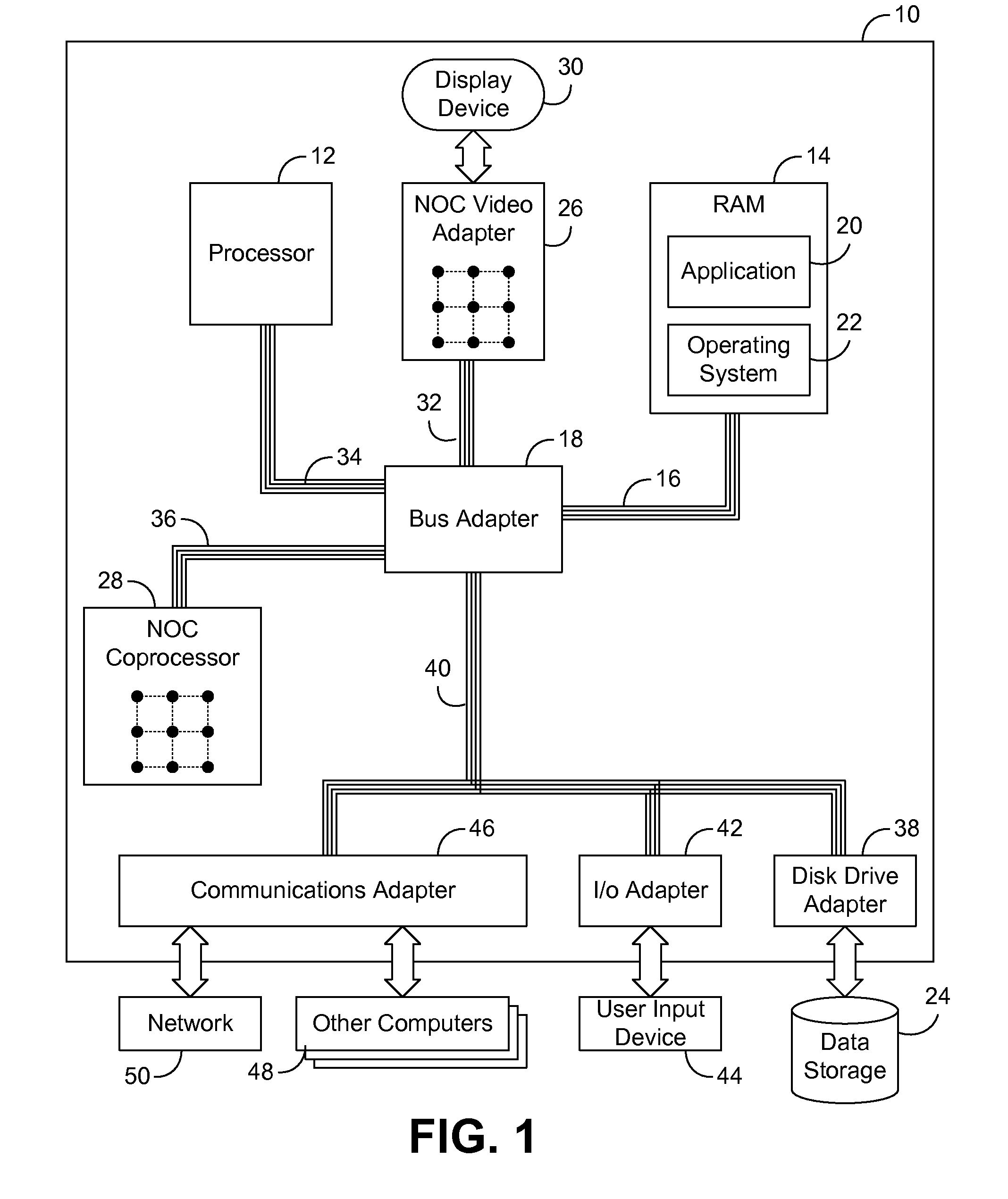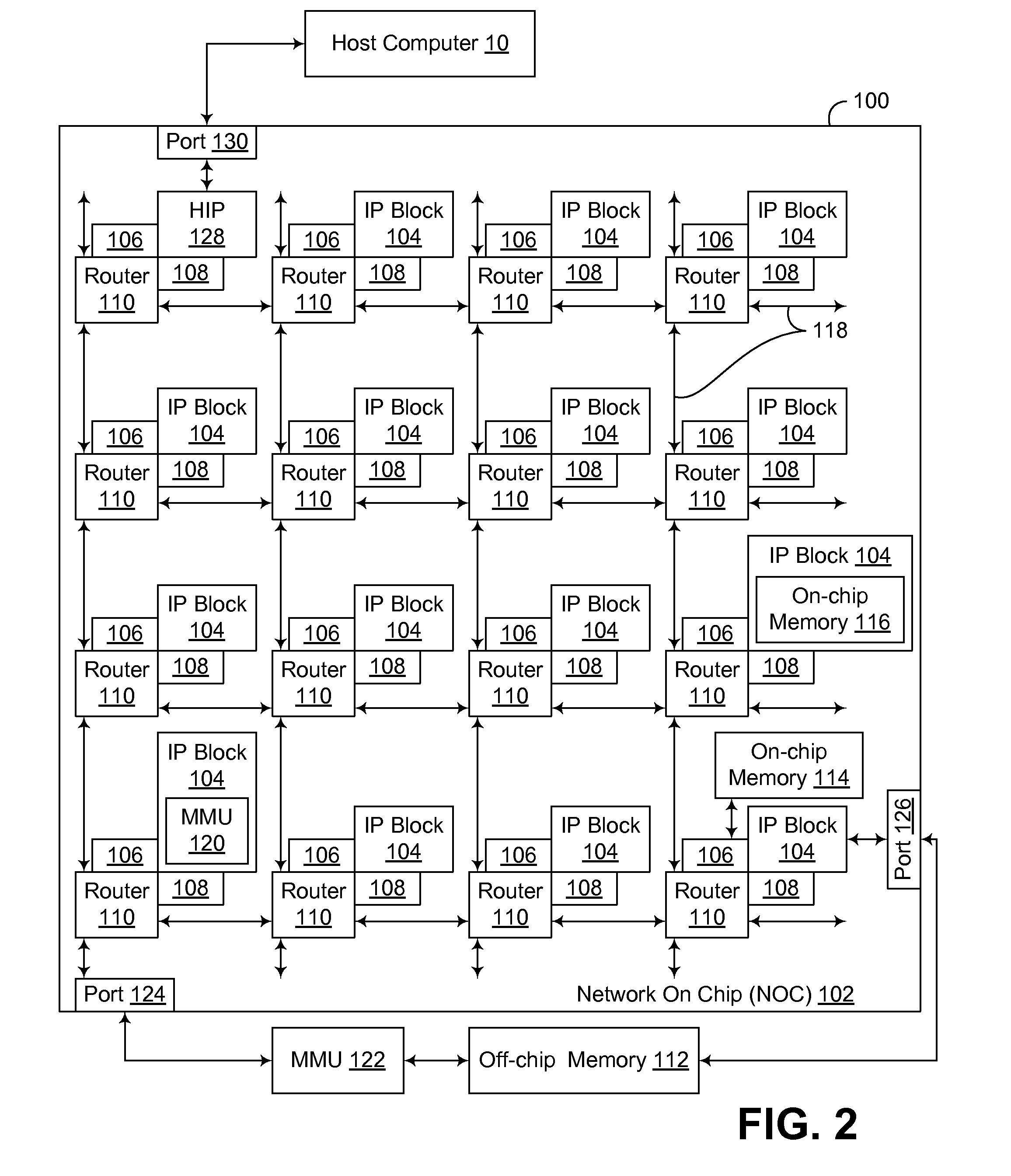Rolling texture context data structure for maintaining texture data in a multithreaded image processing pipeline
a texture data and context data technology, applied in the field of data processing, can solve the problems of low amount of computational power, rasterization suffers from several drawbacks, and modern monitors display images, and achieve the effect of facilitating access to texture data
- Summary
- Abstract
- Description
- Claims
- Application Information
AI Technical Summary
Benefits of technology
Problems solved by technology
Method used
Image
Examples
Embodiment Construction
[0031]Embodiments consistent with the invention utilize a multithreaded rendering software pipeline architecture with a rolling texture context data structure that is used to store multiple texture contexts that are associated with different textures that are being utilized by the software pipeline. Each texture context stores state data for a particular texture, including either the texture image data itself or a pointer to the texture image data, e.g., as may be stored in a cache. The usage of texture data, and a coherent state therefor is maintained throughout multiple parallel stages of a rendering pipeline. Furthermore, a rolling data structure is utilized to enable earlier of a rendering pipeline to modify the state for a particular texture context when performing work therewith out corrupting the state, or otherwise requiring synchronization with the state seen by other stages of the rendering pipeline when performing other work with the associated texture.
[0032]Existing grap...
PUM
 Login to View More
Login to View More Abstract
Description
Claims
Application Information
 Login to View More
Login to View More - R&D
- Intellectual Property
- Life Sciences
- Materials
- Tech Scout
- Unparalleled Data Quality
- Higher Quality Content
- 60% Fewer Hallucinations
Browse by: Latest US Patents, China's latest patents, Technical Efficacy Thesaurus, Application Domain, Technology Topic, Popular Technical Reports.
© 2025 PatSnap. All rights reserved.Legal|Privacy policy|Modern Slavery Act Transparency Statement|Sitemap|About US| Contact US: help@patsnap.com



